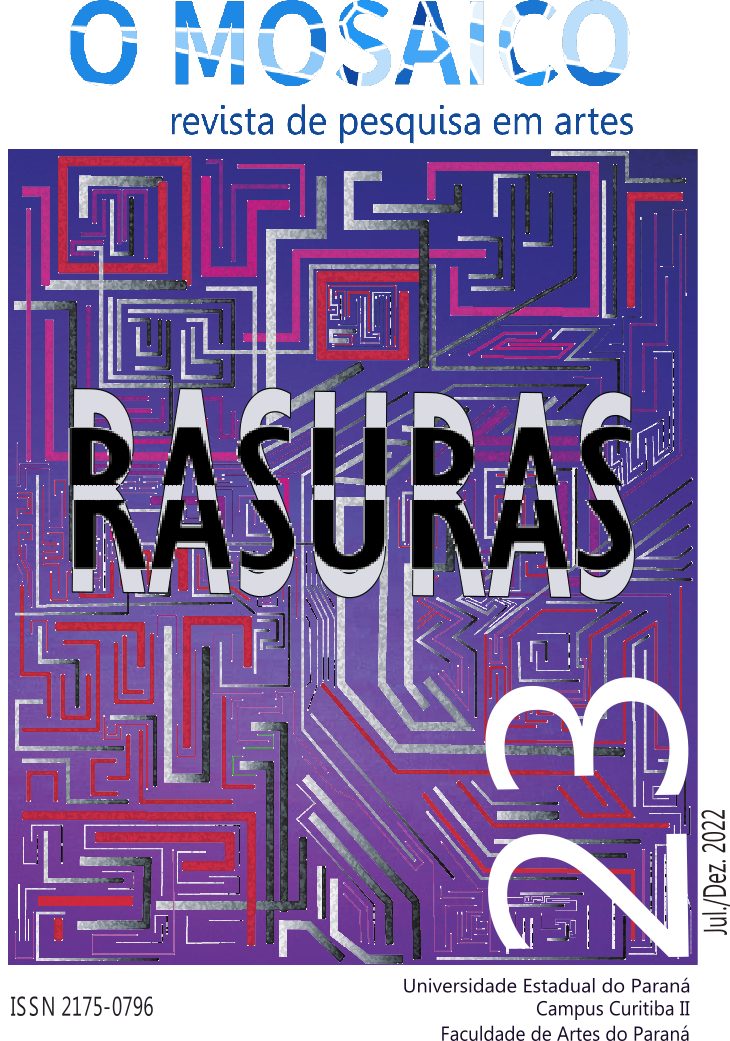UM Núcleo de intergeracionalidade na arte e na educação
DOI:
https://doi.org/10.33871/21750769.2022.15.1.6967Palavras-chave:
extensão universitária; dança; arte-educação; intergeracionalidadeResumo
Este artigo inicia sua introdução com uma trajetória pessoal pavimentada pela estrutura da educação e o encanto da arte. Tem como objetivo versar sobre aspectos da pesquisa em andamento junto ao Programa de Extensão, Um-Núcleo de Pesquisa Artística em Dança oferecida pela FAP-UNESPAR, que a meu ver oferece uma interessante perspectiva intergeracional. Como integrante do Programa, apresento algumas percepções advindas das vivências e reflexões com aluno(a)s e ex-aluno(a)s, mestrand(a)os, doutorand(a)os, professores da dança e professores da música da Faculdade de Artes do Paraná. Grupo este conhecido por “Um Núcleo”, criado há 35 anos pelo colegiado do curso de dança da Unespar. Advindos da própria pesquisa-ação-reflexão alguns temas apresentados tratam da inevitável envelhescência de professores e artistas, sobre confluências e divergências veladas, não discutidas nos espaços sociais, entre as culturas do adulto envelhescente e do jovem estudante. Envolvem percepções sobre o papel das reminiscências e da formação de vínculos que dizem respeito à intra e inter intergeracionalidade. Através de dados colhidos na pesquisa teórica foi possível reconhecer que um grupo intergeracional é um espaço de compartilhamento, autoconhecimento e de inclusão participativa. Vislumbra-se pontes e muros intra e intergeracionais, porém, não há como mensurar resultados efetivos. Há o reconhecimento de que a educação e a arte podem e devem atuar como mediadoras nas trocas geracionais. Aponta ainda a possibilidade da consolidação de valores éticos e a valorização da construção do saber e do conhecimento coletivo.
Downloads
Downloads
Publicado
Como Citar
Edição
Seção
Licença
Copyright (c) 2022 O Mosaico

Este trabalho está licenciado sob uma licença Creative Commons Attribution-NonCommercial-ShareAlike 4.0 International License.
Os autores detém os direitos autorais, ao licenciar sua produção na Revista O Mosaico/FAP, que está licenciada sob uma licença Creative Commons. Ao enviar o trabalho,e mediante o aceite, o autor cede seus direitos autorais para a publicação na revista. Osleitores podem transferir, imprimir e utilizar os artigos publicados na revista, desde que hajasempre menção explícita ao(s) autor (es) e à Revista O Mosaico/FAP não sendo permitidaqualquer alteração no trabalho original. Ao submeter um artigo à Revista O Mosaico/FAP e após seu aceite para publicação os autores permitem, sem remuneração, passar osseguintes direitos à Revista: os direitos de primeira edição e a autorização para que aequipe editorial repasse, conforme seu julgamento, esse artigo e seus meta dados aosserviços de indexação e referência.


